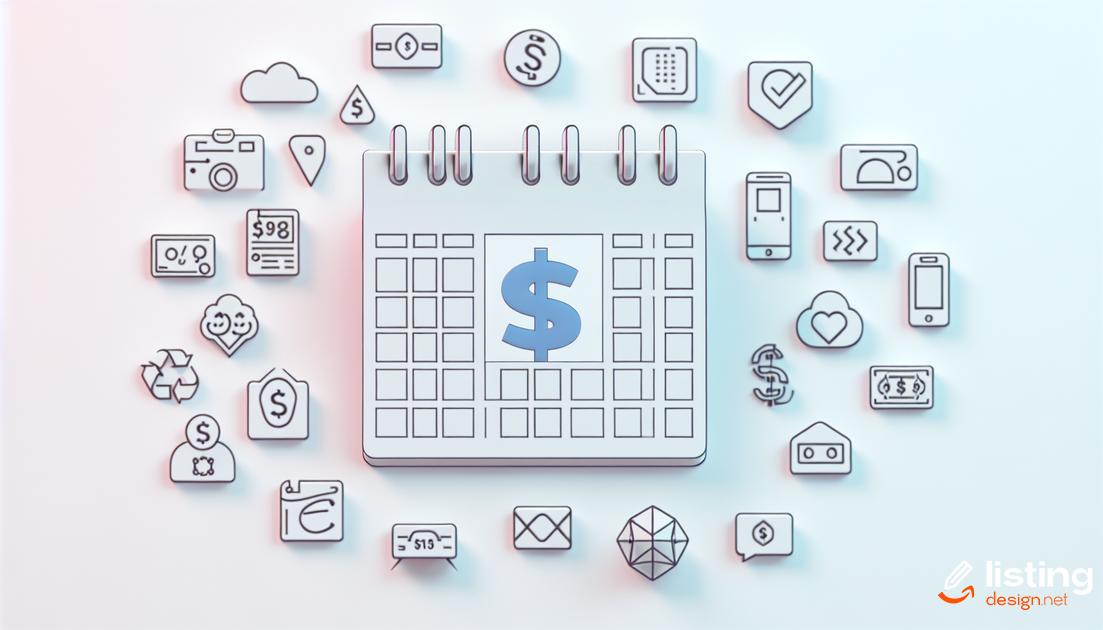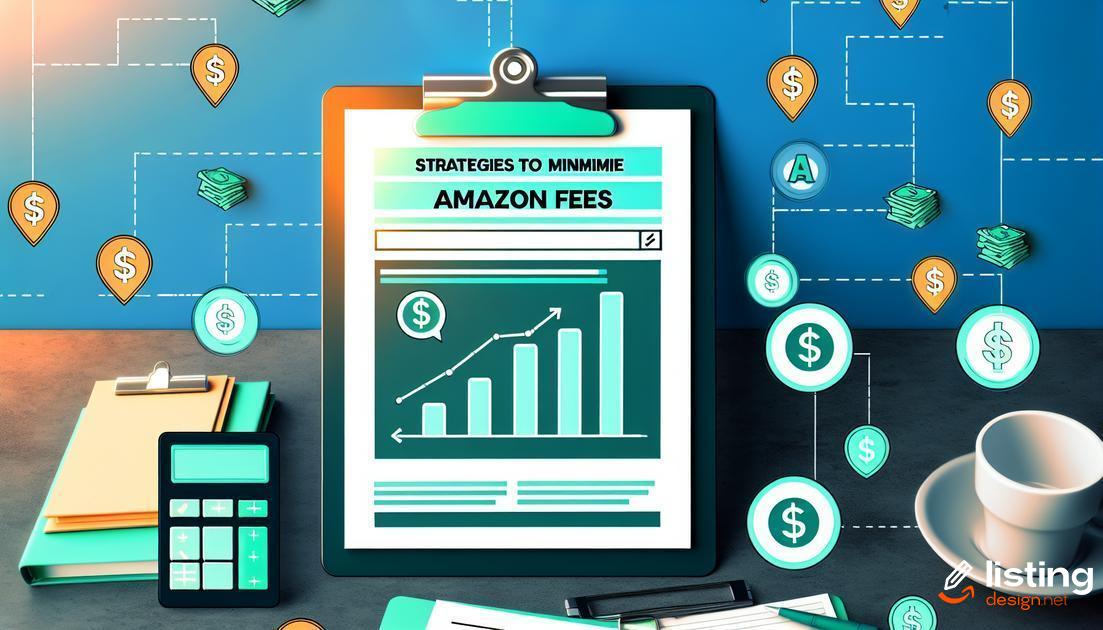Amazon selling fees can be complex and confusing, but understanding them is crucial for any seller. This guide on Amazon selling fees explained will help you navigate through the different costs involved in selling on Amazon. From referral fees to fulfillment costs, we’ll cover everything you need to know to better manage your expenses and maximize your profits.
Table of Contents
Understanding Amazon Selling Plans
Amazon offers three main selling plans: Individual, Professional, and Amazon Handmade.
Individual Plan: Sellers pay $0.99 per item sold, making it ideal for those planning to sell fewer than 40 items a month. This plan does not offer advanced selling tools or reports.
Professional Plan: This plan costs $39.99 per month irrespective of the number of items sold. It provides access to advanced selling tools, reports, and the ability to advertise products.
Amazon Handmade: A unique plan aimed at artisans and crafters, it charges a 15% referral fee but does not include a monthly subscription fee. This is suitable for those selling handmade, crafted goods.
Referral Fees Overview

Understanding Referral Fees
When selling on Amazon, one of the most significant fees to consider is the referral fee. This fee is charged on each item sold and varies depending on the product category. Typically, the referral fee is a percentage of the total sales price, including the item price and any shipping or gift wrap charges.
For most categories, the referral fees range between 6% and 45%, with an average fee of around 15%. However, some categories may have higher or lower percentages. For instance, books often incur a 15% referral fee, while jewelry can attract a higher fee.
Minimum Referral Fees are also in place for certain categories. For example, if a product has a low sales price, Amazon might charge a minimum referral fee to ensure their costs are covered. This fee structure ensures that sellers of low-cost items still contribute to the platform’s operational costs.
It’s essential to be aware of these fees and factor them into your pricing strategy to maintain profitability. Knowing the specific referral fees for your product categories enables better financial planning and pricing adjustments, making sure you remain competitive while covering all costs involved in selling on Amazon.
Fulfillment by Amazon (FBA) Fees
Fulfillment by Amazon (FBA) fees play a substantial role in your overall selling costs on Amazon. These fees are divided into two main categories: FBA fulfillment fees and monthly storage fees. The FBA fulfillment fees cover the entire pick, pack, and shipping process. These costs depend on the size and weight of your item. For instance, standard-size items have a lower fee compared to oversized items.
The monthly storage fees are charged based on the volume of space your inventory occupies in Amazon’s warehouses. These fees are higher during the peak season, which typically runs from October to December. It’s essential to manage your stock effectively to avoid unnecessary storage costs.
Additionally, there are some other occasional fees that sellers should be aware of. These include the long-term storage fees, which apply to items stored for more than 365 days, and the removal fees, applicable when you request Amazon to return or dispose of your inventory.
Understanding these various fees helps in accurately calculating your profitability and pricing your products effectively on Amazon.
Monthly Subscription Fees

Amazon offers two main selling plans for sellers: the Individual Selling Plan and the Professional Selling Plan. The Individual Selling Plan is designed for sellers who plan to sell fewer than 40 items per month. With this plan, there is no monthly subscription fee, but sellers pay a $0.99 fee per item sold, in addition to other applicable selling fees.
On the other hand, the Professional Selling Plan targets businesses and high-volume sellers. This plan requires a monthly subscription fee of $39.99. Although this fee does not include other selling fees like referral fees and variable closing fees, it offers several advantages:
- Allows sellers to list an unlimited number of products without the per-item fee.
- Provides access to advanced selling tools, such as bulk listing and inventory management tools.
- Enables eligibility for top placement on product detail pages.
- Grants access to Amazon’s advertising tools and promotions.
Sellers must assess their sales volume and business needs when deciding between the two plans. Choosing the right plan can significantly impact the overall cost of selling on Amazon.
High-Volume Listing Fees
High-volume listing fees are charged if you list more than 100,000 items on Amazon. These fees can add up quickly and impact your overall profitability. Understanding these fees is crucial for high-volume sellers.
For each active listing above the 100,000 threshold, Amazon charges an additional fee, which is calculated monthly. These fees vary depending on the category of your items.
Calculating High-Volume Listing Fees:
To calculate the high-volume listing fees, you need to consider the following:
- The total number of active listings in your account
- The additional fee per listing above the 100,000 threshold
- The category-specific charges
To optimize your listings and avoid excessive fees, it’s essential to manage your inventory effectively. This includes regularly reviewing your active listings and removing any that are inactive or duplicates.
Reducing high-volume listing fees involves strategic planning and continuous monitoring of your account. By doing so, you can maintain a balance between having a comprehensive product range and controlling your costs.
Refund Administration Fees

When selling on Amazon, you may need to issue refunds to your customers occasionally. It’s essential to understand the Refund Administration Fees to manage your finances better.
Amazon generally charges a refund administration fee, which is either $5 or 20% of the applicable referral fee, whichever is less. This fee helps cover the cost of processing the refund and handling associated tasks.
Formula for Refund Administration Fees
To calculate the fee, follow this simple formula: Multiply the referral fee by 20%, and if this amount is higher than $5, Amazon will charge the $5 fee instead.
Suppose a buyer purchased an item for $100, and the referral fee for that item category is 15%, totaling $15. If a refund is issued, the administration fee would be calculated as 20% of $15, equaling $3. Since $3 is less than the $5 threshold, Amazon would charge the $3 fee.
Exceptions and Exemptions
Some items may be exempt from refund administration fees, like those with special return conditions or low-cost items. However, these cases are relatively rare.
Understanding how Refund Administration Fees work can help you plan for occasional returns and manage your Amazon selling account more effectively. Keep track of these fees to better understand their impact on your overall costs.
Shipping Costs Breakdown
Shipping costs are an integral part of selling on Amazon, and understanding how these fees are calculated can help sellers manage their expenses effectively. Shipping costs on Amazon can be influenced by several factors, including the size and weight of the item, the shipping method chosen, and the destination of the shipment.
Weight-Based Fees: Amazon calculates shipping fees based on the weight of the item. Heavier items will incur higher shipping fees, and sellers should be aware of these costs when pricing their products.
Shipping Method: The chosen shipping method also plays a significant role in determining costs. Standard shipping is typically less expensive, while expedited or overnight shipping options will increase the fees.
Destination: Shipping costs can vary widely based on the destination. Domestic shipments within the same country may be cheaper compared to international shipments, which often require additional handling and customs fees.
For sellers using Amazon FBA, shipping costs are a bit different. In this case, Amazon charges for shipping the products to their warehouses and then for the final delivery to the customer. Balance these costs by taking advantage of Amazon’s discounted shipping rates for FBA items.
In addition to these factors, sellers must consider packaging materials. Proper packaging is crucial to avoid damage during transit, but it can also add to the shipping costs. Opt for cost-effective yet sturdy packaging solutions to keep expenses under control.
Conclusion:
Though it is essential to understand the breakdown of shipping costs, strategies such as optimizing packaging, choosing cost-effective shipping methods, and leveraging FBA can help minimize these fees and improve profitability. As an Amazon seller, staying informed and proactive in managing shipping costs will allow you to maintain a competitive edge in the market.
Strategies to Minimize Amazon Fees

Optimize Your Product Listings: Ensure your product listings are well-optimized with relevant keywords to improve your search rankings on Amazon. Higher visibility can lead to increased sales, helping you offset some of the fees.
Choose the Right Selling Plan: Evaluate whether the Individual or Professional selling plan best suits your business needs. If you sell more than 40 items a month, the Professional plan may save you money despite its monthly fee.
Utilize FBA Wisely: Analyze whether using Fulfillment by Amazon (FBA) makes sense for your business. While FBA can improve customer satisfaction and increase sales, it also comes with additional fees. Weigh the benefits against the costs carefully.
Leverage Multi-Channel Fulfillment:
If you use FBA, consider Multi-Channel Fulfillment (MCF) to fulfill orders from other sales channels through Amazon’s fulfillment network. This can streamline your operations and reduce overall fulfillment costs.
Monitor Your Inventory Levels: Keep track of your inventory to avoid long-term storage fees. Use Amazon’s Inventory Performance Index (IPI) to help manage stock levels effectively and stay within recommended limits.
Review Pricing Regularly: Keep an eye on your product pricing and adjust as needed to stay competitive. Regularly reviewing and updating your prices can help you maximize sales and reduce the impact of referral fees.
Take Advantage of Amazon Promotions:
Participate in Amazon deals and promotions to boost your sales volume. Increased sales can help spread out the fixed fees, making them less burdensome.
Minimize Refunds and Returns: Ensure your product descriptions are accurate and that you deliver high-quality products to minimize refund and return rates. Reduced returns can lead to fewer refund administration fees.


